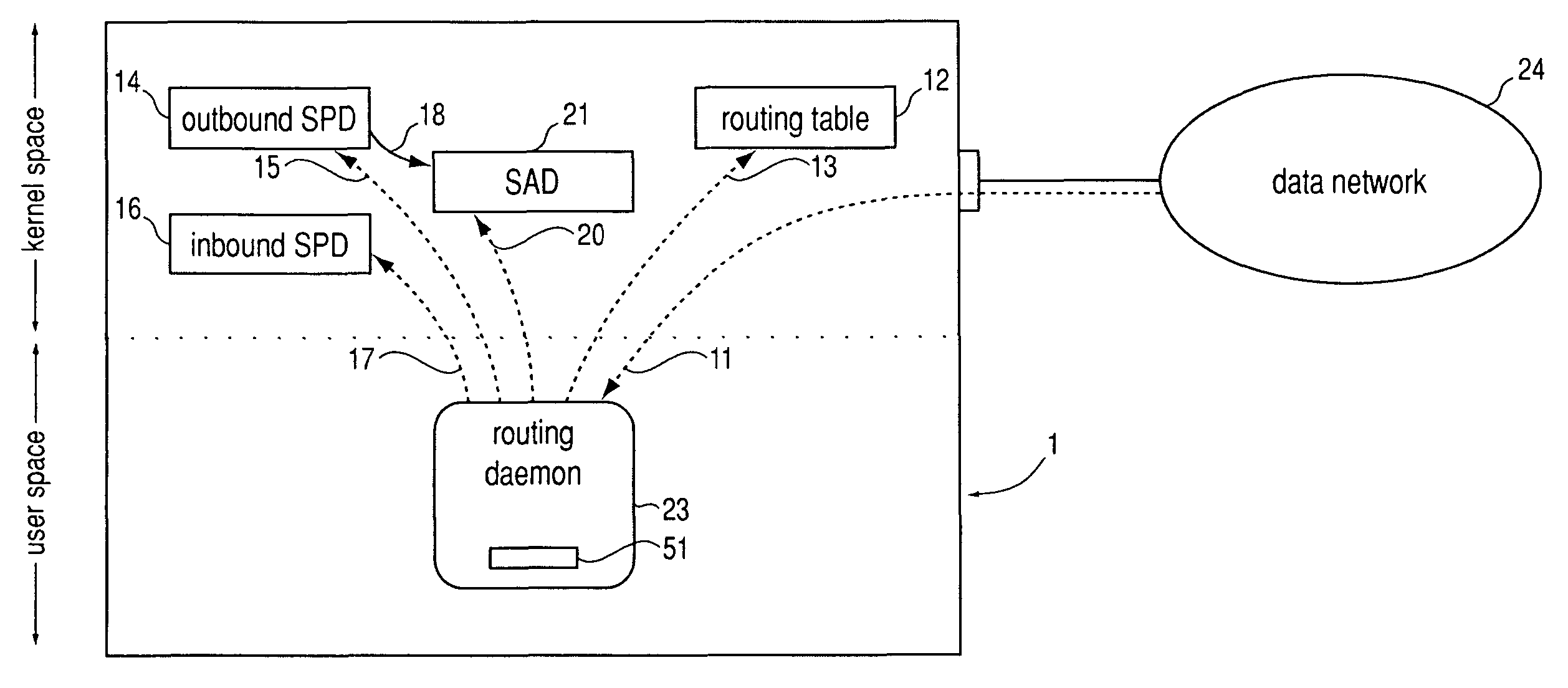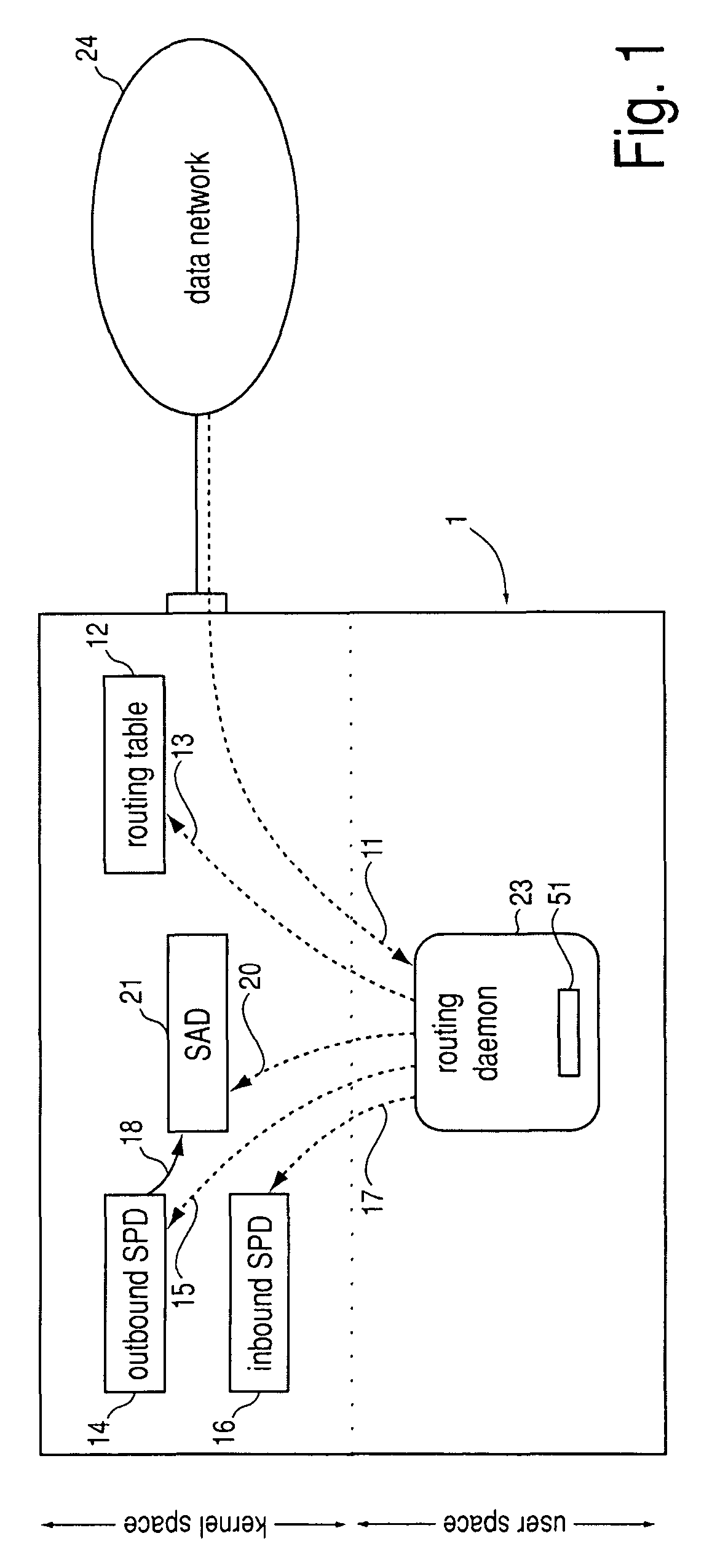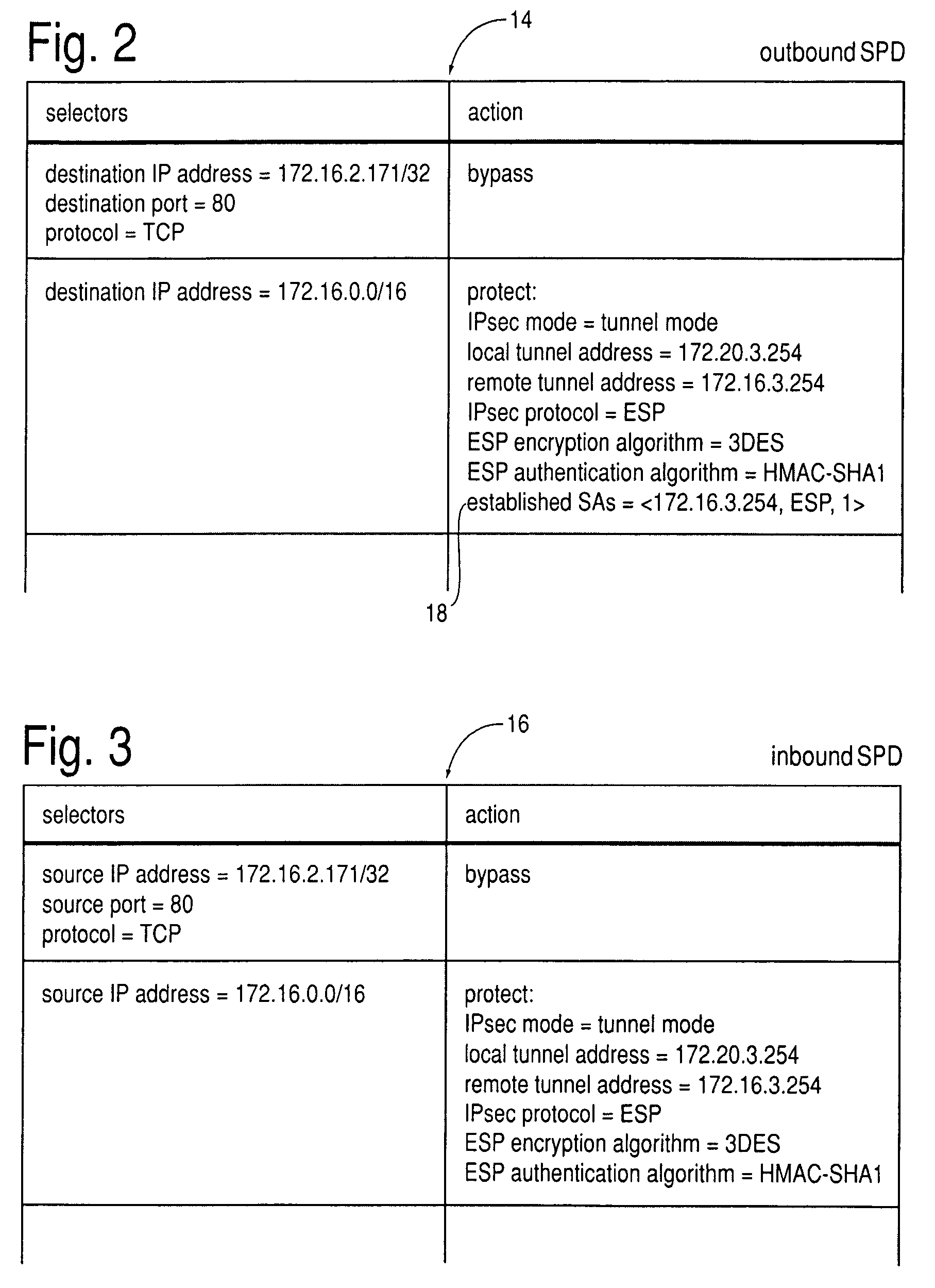Method, system and storage medium for establishing compatibility between IPsec and dynamic routing
a technology of dynamic routing and ipsec, applied in data switching networks, instruments, digital transmission, etc., can solve the problems of packet loss, incompatibility of ipsec and dynamic routing, and two technologies so far incompatibl
- Summary
- Abstract
- Description
- Claims
- Application Information
AI Technical Summary
Benefits of technology
Problems solved by technology
Method used
Image
Examples
Embodiment Construction
[0033]Underlying the invention is the insight that the IPsec data structure SPD bears similarities to a routing table.
[0034]An entry in a routing table 51 (FIG. 5) consists of a “destination”52, i.e. a network destination address, of a “gateway” or “next hop”53, i.e. the network address of the data processing apparatus to which datagrams with said network destination address are to be forwarded, and of other parameters as appropriate, like e.g. a metric 54 which, should there be multiple routing table entries with the same network destination address, allows for ranking of these entries so that the best entry can be used.
[0035]An entry in an outbound SPD 14 (FIG. 2) consists of one or more “selectors” and an “action”. A “selector” specifies the value of a certain header field in an outgoing datagram. The “action” specifies how a datagram is to be processed if it matches all of the SPD entry's “selectors”: Drop the datagram (“discard”), pass it through as cleartext (“bypass”), or hav...
PUM
 Login to View More
Login to View More Abstract
Description
Claims
Application Information
 Login to View More
Login to View More - R&D
- Intellectual Property
- Life Sciences
- Materials
- Tech Scout
- Unparalleled Data Quality
- Higher Quality Content
- 60% Fewer Hallucinations
Browse by: Latest US Patents, China's latest patents, Technical Efficacy Thesaurus, Application Domain, Technology Topic, Popular Technical Reports.
© 2025 PatSnap. All rights reserved.Legal|Privacy policy|Modern Slavery Act Transparency Statement|Sitemap|About US| Contact US: help@patsnap.com



